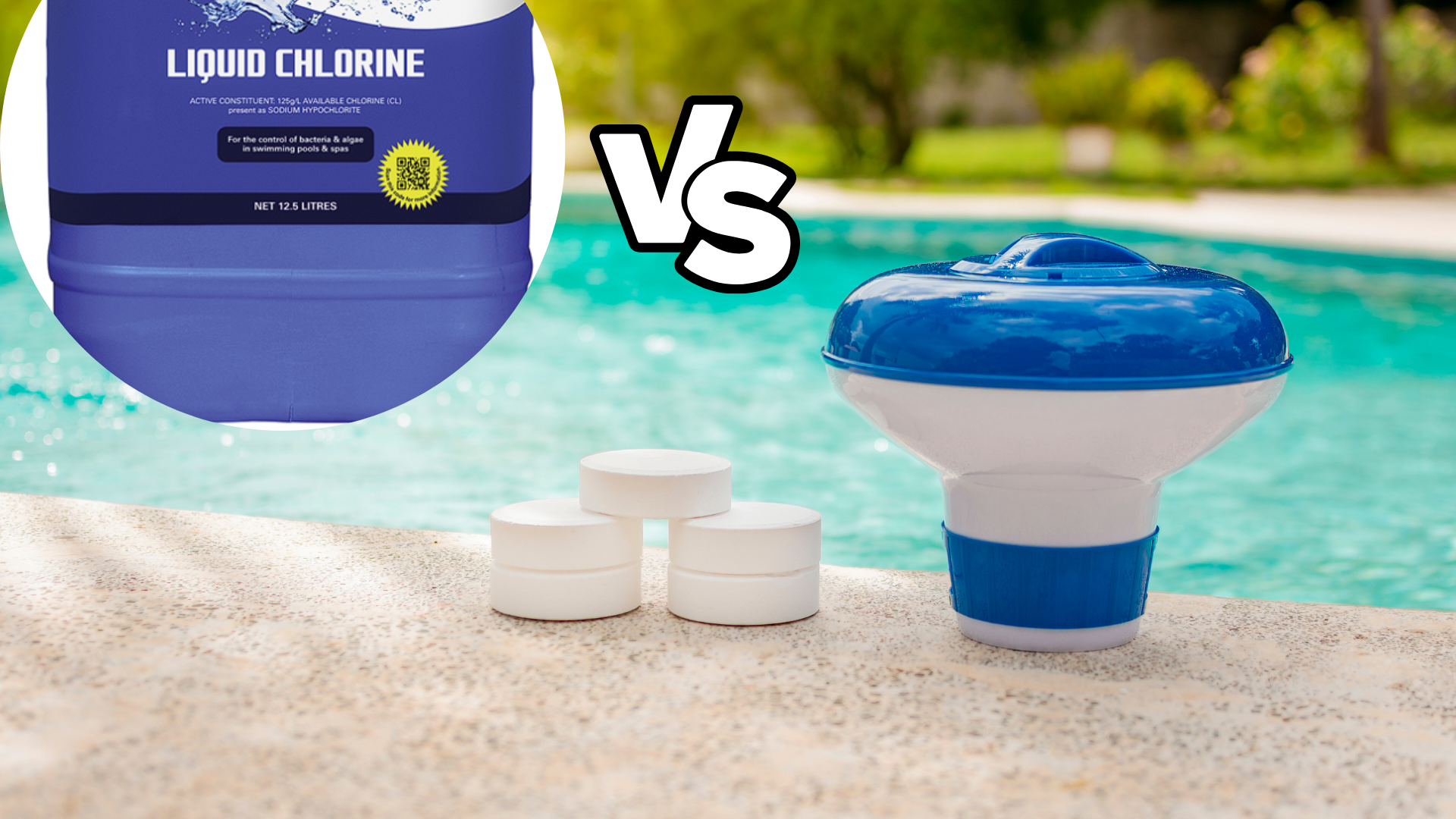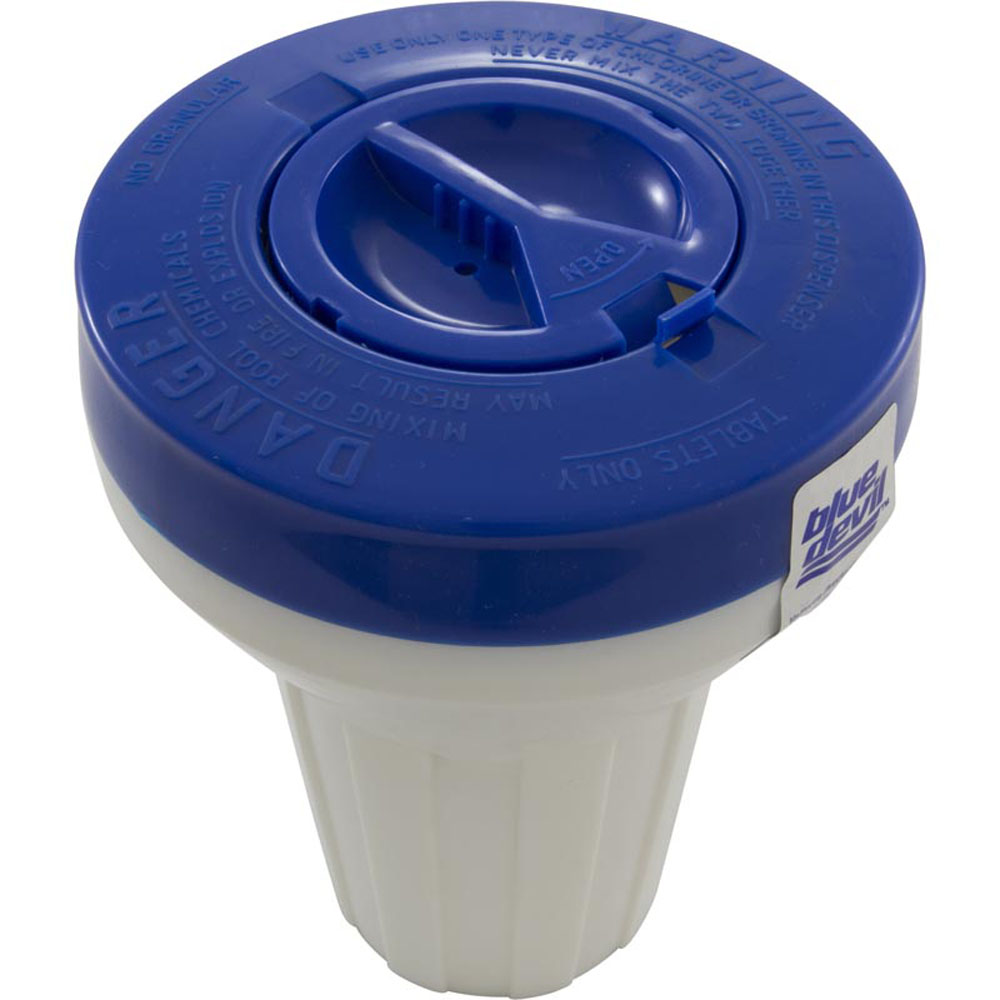Using Liquid Chlorine Vs. Tablets in Swimming Pool
Posted by Michael Hervas on Apr 20, 2020

Last Updates: March 21, 2024; May 04, 2023; February 08, 2022
Keeping your swimming pool clean is no laughing matter. A pool suffering from neglect can easily harbor organisms that can make swimming an unpleasant - not to mention unhealthy - affair. Algae can bloom in stagnant pool water while constant use can attract a variety of harmful microorganisms and viruses that you don't want to be anywhere near your skin. It is thus imperative that you regularly sanitize your pool, and the good news is that this task is not what you would figuratively call rocket science. Often, this simply involves dissolving tablets in your pipes or using liquid chlorine. In pool maintenance, these two options are the go-to solutions for sanitizations which begs the question: is liquid chlorine better than chlorine tablets, or is it the other way around?
How Does Liquid Chlorine and Chlorine Tablets Differ?
First off, though, let us tackle the differences between liquid chlorine and swimming pool chlorine tablets. Unsurprisingly, the differences go beyond the state of matter that these chemicals are in. Each has its own unique chemical composition, methods of application, advantages, disadvantages, and so on and so forth.
Liquid Chlorine
Any liquid chlorine-based pool sanitizer is basically the same thing that you use to bleach your clothes or remove pesky stains in your laundry, albeit much stronger in terms of chlorine concentration. Liquid chlorine solutions specifically formulated for pools typically contain chlorine at somewhere from 10% to 12%, while laundry bleach is no more than 6% chlorine at most. Composition-wise, liquid chlorine is thus comprised of a small fraction of chlorine, a whole lot of water, and a little bit of salt, all of which are chemicals that your skin can more than simply tolerate.
Sanitizing the pool with liquid chlorine involves nothing more than pouring the solution directly to the water. The concoction will then quickly dissipate in the water, adding to it nothing more than chlorine, more water, and a teeny bit of salt. The solution has a very small amount of filler material in it, which means that you are basically getting your money's worth.
While using liquid chlorine in pool sanitization is not complicated, the downside is the fact that you will need to use plenty of this chemical in one session. This is because you will not want your sanitizing work to ruin the chemistry in your pool, so you will need to put in just the right amount of liquid chlorine to maintain the balance. Ideally, a pool's water will need to have a pH level that is no lesser than 7.4 and will not go any higher than 7.6, so expect to add a large volume of liquid chlorine if you are to keep this balance. Another disadvantage with liquid chlorine is its shelf life, which can only last a few weeks before its potency starts to deteriorate. Storing it in hot places also weakens the solution. But this can be easily remedied by just buying what you need.
How Much Liquid Chlorine Should I Use?
You can start adding 3-5 ppm of liquid chlorine to your pool water and test for free chlorine using a test kit (highly recommended) or test strip daily. Lower amount of liquid chlorine your adding daily if the free chlorine is increasing. But if it's decreasing just add more quantity to your daily liquid chlorine. By doing this you'll be able to determine your pool's daily chlorine requirements.
Taylor K-2005 (Free Chlorine Test Kit)
Pool Chlorine Tablets
Many will tell you that swimming pool chlorine tablets are essentially the solid version of liquid chlorine sanitizers, and these folks sure are not far from the truth. Unlike liquid chlorine solutions that are nothing more than chlorine mixed into water, chlorine tablets are typically composed of chlorine and a stabilizing component which is usually cyanuric acid or CYA. The tablets can be quite acidic at 2.5 pH, but they tend to lower the pool's pH level as they introduce chlorine into the water.
Pros:
The main advantage of a pool sanitizer in tablet form is the convenience and the minimal labor needed in its application - in other words, it is very efficient in terms of cost and the work involved. While you will need to haul gallons of liquid chlorine to the pool get the work done, tablets are light and can be easily applied via chlorinators in the pool's plumbing or tablet floating dispensers. Furthermore, some parts of the stabilizer is released in the atmosphere upon exposure to the sun's ultraviolet rays, preventing the loss of chlorine and ensuring its slow dissipation in the process. In this way, chlorine is distributed in a more consistent manner than what is possible with liquid sanitizers. That is not to mention the fact that you can store tablets for a much longer period than liquid chlorine.
Cons:
Although solid chlorine tablets make for a very convenient way to sanitize your pool, its use is not without any disadvantage. The tablets add not just chlorine but also CYA into the water and this, in itself, is not a bad thing. As mentioned earlier, CYA drastically reduces the amount of chlorine lost upon exposure to ultraviolet light and allows for the slow, consistent dissipation of chlorine into the water. Some parts of the CYA component is lost to the atmosphere in the process; the rest, however, is also added to the water and stays there for a long time. This results in the gradual accumulation of CYA in the pool, and the CYA levels can eventually go up until such point that it ends up blocking the sanitizing effect of chlorine and rendering it useless. Meanwhile, the tablet's 2.5 pH level can be detrimental to the pool's plaster.
How to prevent high cyanuric acid (CYA) levels from chlorine tablets?
One way to prevent high CYA is to limit the use of tablets and alternate it with other chlorine sources, like liquid. You can also dilute the CYA by regularly replacing a portion of pool water, around 10-20% annually. Do a frequent test of CYA levels to ensure it's within recommended range (30-50 ppm). Balancing these 3 methods will help you effectively manage CYA levels and maintain a properly sanitized pool.
Which of the Two is the Better Pool Sanitizer?
Choosing between using liquid chlorine pool sanitizers or chlorine tablets should not be hard and really depends on what you are going for. If you want to shock your pool then liquid chlorine will be the perfect fit. But if you want convenience, a stack of chlorine tablets is the way to go. It also helps that tablets are cost-effective too and have a long shelf life.


